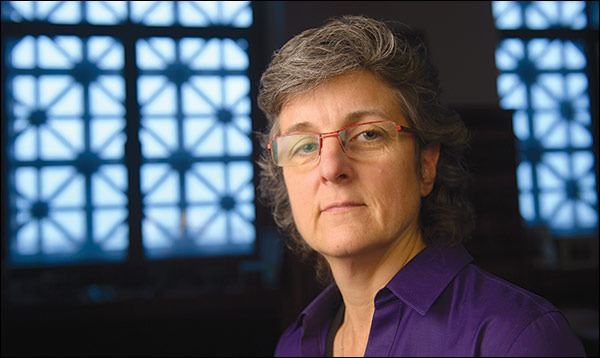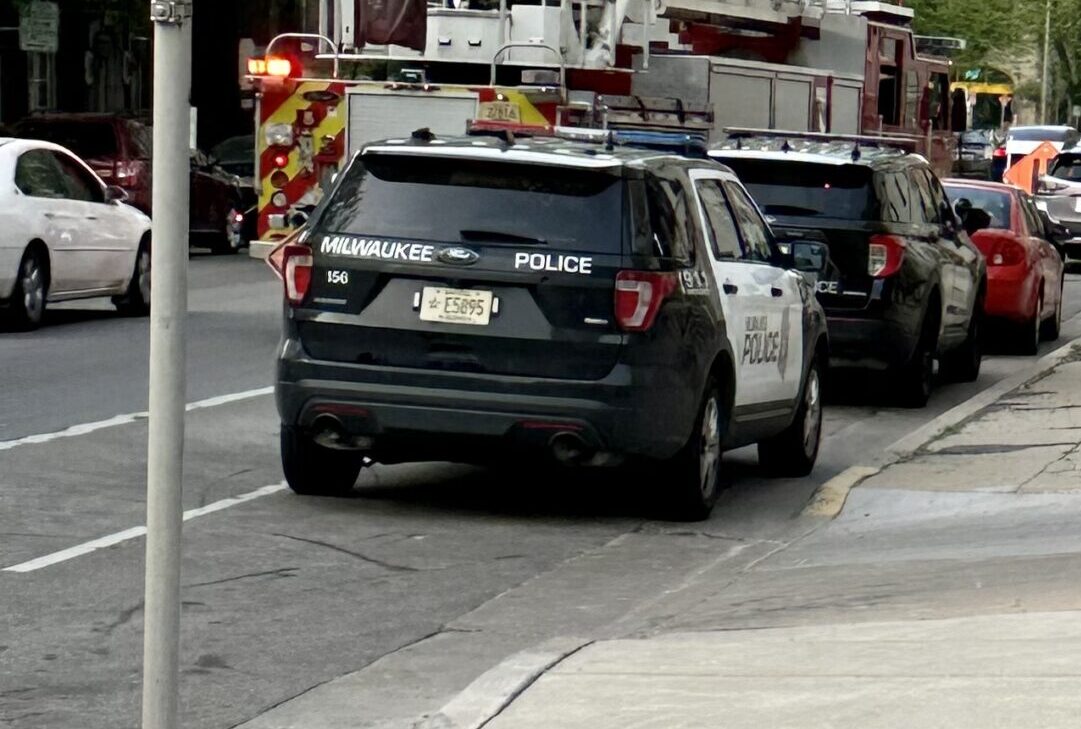Abusing the system: Loopholes prevalent for domestic violence offenders
By: Doug Hissom//December 17, 2012//
Abusing the system: Loopholes prevalent for domestic violence offenders
By: Doug Hissom//December 17, 2012//
Less than two weeks after Polk County Judge Jeffrey Anderson declined a district attorney’s request to set higher bail and bring in a man charged with felony bail jumping and violent offenses, that man allegedly murdered his fiancée.
Scott Youngmark, of Milltown in northwestern Wisconsin, had a violent record across the border in Minnesota. There — as documented in 2009 by the Minneapolis-based violence watchdog group, WATCH — Youngmark had a history of violence going back 23 years, including assault and rape of family members and acquaintances.
But in Polk County, that violent history slipped through the cracks. Youngmark was charged with battery and injury by negligent use of a weapon or explosive, among other things.
In November, District Attorney Daniel Steffen tried to convince Anderson that $10,000 in bail, rather than $500, was necessary to keep Youngmark behind bars, but the DA’s efforts were stymied by deer-hunting season.
Youngmark’s attorney was unavailable during that time, and Steffen’s bail increase request failed Nov. 21.
The bail arguments, Steffen said, “made me the most upset I’ve been in six years” as a district attorney.
Youngmark was charged Dec. 6 with first-degree intentional homicide in the death of his fiancée, Kari Roberts, who had paid his bail less than two weeks prior.
The case clearly shows, Steffen said, how rural courts lack the necessary support, both in money and trained counselors, to properly handle domestic violence cases.
Anderson refused to comment on the matter, saying he could not discuss a pending case.
Tony Gibart, policy coordinator with the Wisconsin Coalition Against Domestic Violence, called the Youngmark example “a case study of a failure.”

“If you can just Google someone’s name and see six, eight pages of domestic violence and sexual assault, and the judge still misses it,” Gibart said, “it’s proof we have a lot of work to do.”
In denying the $10,000 bail request, Anderson, according to Steffen, said he felt Youngmark was complying with bail conditions, including getting treatment. In fact, Steffen said, Youngmark was not complying.
The district attorney said “judges continually cite presumptions of innocence” when he asks for higher bail to keep defendants behind bars.
Rural versus urban
It’s a problem in rural areas, said Wausau family law attorney Christine Olsen, where courts are “much more judge dependent.”
In larger areas such as Milwaukee County, which has three courts dedicated to domestic violence cases, there are more layers of oversight, she said. Milwaukee County prosecutors for those cases are from a team in the district attorney’s office, and community advocacy groups are ready to counsel offenders and help victims work through the court system for restraining orders and other needs.
“In Milwaukee, with the domestic violence courts,” Olsen said, “(prosecutors and judges) are very familiar with each other and the law. Here, judges do everything. That recognition of the nuances of domestic violence is not here.
“We end up having to prove all the elements of domestic violence in every single case. We start from ground zero.”
To get restraining orders and injunctions in criminal family law, she said, the burden of proof is even higher. Madison-based family law attorney Michele Perreault said those in rural areas still have a tendency to consider the cases as domestic problems, even if they should be viewed as seriously as an attempted homicide.
![]()
- Wisconsin attorney general announces gun control legislation targeting domestic violence offenders
- Former Metro Market employee charged after North Shore shooting
- Ex-Packer Guion gets 1 year for domestic violence assault
- How Wisconsin’s ‘honor’ system for removing guns from domestic abusers failed Jesi Ewers
- Lawsuit seeks to block Wisconsin crime victims amendment
“They’re still treating what happens in the home,” she said, “differently than what happens out in the streets.”
There’s also a good chance of familiarity between the lawyers, cops, judges and offenders, she said, leading to the mindset that a domestic violence call was a one-time incident or mistake.
Universal problems
Larger courts aren’t immune to the challenges of domestic violence. Even with more people and more money focused on the problem in Milwaukee courts, domestic violence offenders still can escalate to murderers.
In October, less than two weeks after Milwaukee County Circuit Judge Maxine White granted a temporary restraining order requiring Radcliffe Haughton to avoid his wife, Haughton shot seven people and killed three, including his wife, in a Brookfield hair salon.
“I don’t know in my courtroom whether I’m going to get a homicide,” Milwaukee County Circuit Judge Mary Triggiano said. “We assume all cases are higher risk. We just don’t have a good risk tool.”
Triggiano said there is no way a judge can measure the risk of a person picked up for domestic violence, and that’s why a no-contact order is the first condition of bail. The victim can ask for a 72-hour no-contact order after the perpetrator is arrested, and the judge then keeps that order in place as part of bail.
“I have to be convinced that she’s protected and he’s held accountable,” Triggiano said.

Peter Tempelis, the leader of the Milwaukee County District Attorney’s Domestic Violence Unit, said “lethality” is at the forefront of what his office considers in a case. He said his unit took 82 cases to trial in 2012, which is low compared to the total of 2,545 cases the unit prosecuted overall. But 82 cases was a large increase from 2011, when the unit tried 44 domestic violence cases, he said.
Deferred prosecutions, in which the offender agrees to counseling and perhaps drug and alcohol treatment, help, Tempelis said.
But such treatment is rarely prescribed in rural courts, according to University of California-Davis Law Professor Lisa Pruitt, who published a 2008 paper comparing urban and rural courts. In the course of her research, Pruitt said, she found that smaller law enforcement departments don’t have the money or people to mount a comprehensive response to domestic violence. They also deal with such challenges as a lack of training and an overarching patriarchal attitude.
Work is needed across the state’s court system, Perreault said. The DeWitt Ross & Stevens SC attorney, who has worked with domestic violence victims and now defends the accused, said major backlogs in cases, understaffed judges’ offices and the sheer number of families in need of help force judges to quickly assess who needs intervention the most.
“They line up at restraining order hearings,” she said, “and the judge tries to move as quickly as possible.”
That, Steffen said, is when violent offenders such as Youngmark slip through the cracks.
“We didn’t have an inkling of what he was capable of doing,” Steffen said, “that there were these time bombs.”
Legal News
- Waukesha man sentenced to 30 years for Sex Trafficking
- 12-year-old shot in Milwaukee Wednesday with ‘serious injuries’
- Milwaukee man convicted of laundering proceeds of business email compromise fraud schemes
- Giuliani, Meadows among 18 indicted in Arizona fake electors case
- Some State Bar diversity participants walk away from program
- Wisconsin court issues arrest warrant ‘in error’ for Minocqua Brewing owner
- Iranian nationals charged cyber campaign targeting U.S. Companies
- Facing mostly white juries, are Milwaukee County defendants of color truly judged by their peers?
- Milwaukee Mayor speaks in D.C. Tuesday at White House water summit
- Chicago man sentenced to prison after being caught with ‘Trump Gun’
- FTC bans non-competes
- Gov. Evers seeks applicants for Dane County Circuit Court
WLJ People
- Power 30 Personal Injury Attorneys – Russell Nicolet
- Power 30 Personal Injury Attorneys – Benjamin Nicolet
- Power 30 Personal Injury Attorneys – Dustin T. Woehl
- Power 30 Personal Injury Attorneys – Katherine Metzger
- Power 30 Personal Injury Attorneys – Joseph Ryan
- Power 30 Personal Injury Attorneys – James M. Ryan
- Power 30 Personal Injury Attorneys – Dana Wachs
- Power 30 Personal Injury Attorneys – Mark L. Thomsen
- Power 30 Personal Injury Attorneys – Matthew Lein
- Power 30 Personal Injury Attorneys – Jeffrey A. Pitman
- Power 30 Personal Injury Attorneys – William Pemberton
- Power 30 Personal Injury Attorneys – Howard S. Sicula












